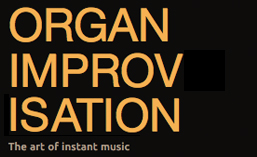As our ears are naturally attracted to the extremes, melodies often get placed in outer voices. The default location for a solo voice tends to be the soprano or uppermost voice. A soft gentle air will usually have the theme here. The most common exception to a soprano solo would be a rousing toccata where the extreme low end gets the theme played by our feet. Today, I want to look at two forms found in the French Classical Suite where the left hand gets the solo.
Basse de Trompette
The basic registration suggestion for a Basse de Trompette is:
- RH (Pos): Bourdon 8′ with the Prestant 4′ or Montre 8′
- LH (G.O.): Trompette 8′, Bourdon 8′, Prestant 4′ or Montre 8′
Depending upon the organ, a Clairon 4′ might also be added to the solo registration and the Doublette 2′ and/or Larigot to the accompaniment.
These pieces are generally in 2 or 4 beats to a measure and often start with the accompaniment alone. They may be imitative and occasionally are even titled as fugues. Most often though, the accompaniment remains simple once the bass solo begins. Whereas a soprano solo may be very lyrical with lots of motion by step, these bass solos are modeled more after pieces written for the viole de gamba with large skips. For example:

Like the other récits last week, it is possible to use other solo registrations for a bass solo. A Basse de Cromorne will have more stepwise motion that a Basse de Trompette, and a Basse de Tierce will be even smoother. Though large leaps will still appear with these other registrations, the frequency of them will decrease as the registration becomes further removed from the trompette. The tempo is also likely to slow down. Because of the activity in the solo voice, the harmonic rhythm is likely to be only one or two chords per measure. That makes these great pieces to work on if you want to practice thinking faster than you play!
Tierce en Taille
The earlier registration suggestion for the Tierce en Taille is:
- RH (G.O.): Bourdon 16′ (or Montre), Bourdon 8′, Prestant 4′
- LH (Pos): Bourdon 8′, Prestant 4′, Doublette 2′, Nazard, Tierce, Larigot
While the pedal is used for these pieces, no registration was specified as there would be so little to choose from on a French Classical organ. Most organs had a Great to Pedal coupler, and the only pedal stop available for accompaniment would be the Flute 8′. As the Tierce stop lost its’ strength in the 18th century, the accompaniment also lost some of its vigor by exchanging the Prestant for a Bourdon and even losing the 16′ stop(s). If a Montre 8′ was available on the Positif, it might be added to the solo and the Prestant 4′ changed to a Flûte 4′.
These movements are some of my favorite from this stylistic period. The registration is rather unique with the accompaniment surrounding the solo (written above and below, but also sounding in the same register as the solo). It was often used at the Elévation in Mass (where the priest consecrates the bread and wine – the most solemn moment of the celebration), but it also appears in other suites for verses of the Magnificat, Gloria, and other hymns. These solos are very vocal in style and highly ornamented. They should be considered like récitatives sung during the same time period, almost without tempo and with lots of freedom to explore the exquisite sounds of this registration. The Cromorne en taille would be slightly less active, but still extremely vocal and highly ornamented. These are delicate pieces so a Trompette would never be chosen as a solo here.
Left Hand Workout
These movements will encourage you to think more about your left hand. As the left hand often ends up playing in the middle of our improvised texture, it can be filler and often is mindlessly making noise. These two solo movements require that we focus our attention on the left hand, whether it is playing the lowest part of a Basse de Trompette or is in the middle as a Tierce en Taille. If you have difficulty focusing on the left hand, you could always rehearse the solo and accompaniment separately. Just like a live duo, the accompanist practices his or her part before meeting the soloist, and the soloist learns his or her part before meeting with the accompanist. Practice your left-hand solos alone to discover how to play the leaps and ornaments for these movements. Practice the right-hand (with pedal) accompaniment so that harmonically you have a support for the solo. Then schedule a joint rehearsal after each has learned his or her part!
May your left-hand solos be as creative and easy as your soprano solos!
Glenn
Newsletter Issue 47 – 2015 08 31
See the complete list of past newsletter issues here.
Sign up to receive future issues using the box to the right on this page.







